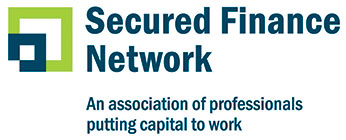Flexible Workplace Arrangements – Attracting and Retaining Talent in the Current Environment
By Jason Hoefler
The secured finance industry, just like so many others, has demanded that remote work become the “norm.” Will this change better enable the industry to attract and retain top talent?
In the June/July edition of The Secured Lender I participated in a roundtable discussion called “The New Normal.” I asked my boss, Mike Scolaro, to review my written responses and we had a discussion on the topic. For one of the questions regarding the outlook for ABL over the next six months, Mike added his own thought, which prompted this article; “How and where we work is evolving in the blink of an eye. The industry changed from a monolithic, stodgy workplace replete with age-old mores and customs to a bustling, fast-paced work-from home environment more typically associated with new-age companies. Suddenly, the industry can compete for employees demanding more flexibility.”
For the last 14 years or so, my routine has been to leave my house at approximately 7:50 each day, drive to the Metra train station and walk in the downtown Chicago office at 9:05am (2.5 hours round trip each day!). I came in “late” to spend a little time with my kids before I left my house in the morning since a late night could mean missing bedtime, particularly when they were young. I remember discussing this adjustment with my manager as it was a little out of the norm at that time not to be at work by 8:30. Perhaps not an extreme example of a flexible workplace arrangement (FWA), but I was grateful for the accommodation and have been a champion of FWA since. Prior to the pandemic, a very experienced portfolio manager on my team worked half of the year from his second home in Florida and another taught yoga two days per week and worked from home on those days. The arrangement has worked very well, requiring a little different communication and planning, but now feels completely normal.
Now having worked from home each day since early March, I have found that I still wake up at the same time as I used to no matter what time I set the alarm and therefore am able to start working much earlier than my standard 9:05 a.m. I even read the paper at night instead of during my morning commute¸ shifting even more of my workday. Now I try to replace some of the commute time walking the dog, hitting a bucket of balls, going out to breakfast with my wife or spending a little time with my now 16-year-old daughter, Courtney, or 15-year-old son, Andrew, once they finally emerge from their bedrooms sometime after noon. I have become such a huge fan of the five-second commute to my basement and having a little flexibility during the day that I see myself continuing this one or two days a week even when this is all behind us.
Clearly, this environment comes with challenges: lack of impromptu meetings and discussions, the missed learning opportunities sitting with your peers, the office camaraderie and culture that are missed in a pure work-from-home setting; onboarding and training a new employee, just to name a few. That is why the office setting will never die completely. However, the appeal of an FWA is obvious. Will employees now demand such flexibility? Will employers accommodate in order to attract and retain employees? Is it appealing enough to draw different backgrounds into our industry? Is this the New Normal?
I discussed the topic with a handful of industry leaders, including Mike Scolaro, head of BMO ABL; Jason Riley, Central and West Region portfolio/underwriting manager from Bank of America Business Capital; David Grende, head of Siena Lending Group; and Tim Knight, vice president of ThinkingAhead Executive Search.
Flexible Workplace Arrangements
No stranger to FWA, Jason Riley has worked in such a way for the past six years, commuting three days per week to Chicago from his home in Milwaukee. I was curious as to Jason’s experience now that his entire team is remote. “Overall, I believe our teams have adjusted very well to the new work-from-home environment. Technology allows our employees to be very productive working from home during these unprecedented times. Teams in our industry are certainly fortunate to have the ability to work at home compared to those in some other industries who don’t have that option.”
At Siena Lending Group, Dave Grende is also experienced with FWA, noting that approximately 25% of his employees are located away from its Samford, CT headquarters. In addition to having business development officers local in its markets, Siena also has underwriters and portfolio managers located in Florida, New York and Delaware. “The individuals working away from the office are all experienced folks who do not require a lot of guidance. It is much more important for someone beginning their career to be in the office to learn from those around them.”
Riley noted a similar sentiment, “This is much easier with a cohesive team. The challenges are greater when our teams experience turnover and add new employees.”
Mike Scolaro added: “While I was an early supporter of FWA, my position was based upon what I perceived as a no-cost benefit we could offer our employees. Never in my wildest imagination could I have envisioned working from home for a protracted period. At this juncture, I cannot imagine commuting to the office five days a week.”
Tim Knight, who has worked for 24 years recruiting within the ABL and banking industry, had this to say: “The prospective employer’s policy on flexible workplace arrangements and typical office attendance is routinely part of a candidates-screening questions, including both men and women, young and old, ranks near the top when it comes to criteria in making a new work or career decision. Younger employees, in particular, are accustomed to working how and when they want and employers requiring differently will have a hard time retaining such employees. Corporate cultures are being disrupted and so is the traditional office setting as part of that culture.”
After hearing everyone’s experiences with the new environment, which was, overall, very positive in our conversations, I was curious on expectations for the future environment once all of this is behind us:
Riley indicated this what he is hearing from his team: “Despite working well at home, several of my colleagues have recently indicated they prefer working in the office with their teammates over working from home. They learn from and enjoy interactions with teammates whom they don’t work on transactions with on a regular basis. The office environment helps our teams build relationships with others that may expose them to other future career opportunities within the bank. They also miss the social aspects of the office environment. I do believe that the current work environment has proven that our teams can be productive working from home, but I know many of our teammates are looking forward to returning to the office environment once it is deemed safe to do so.”
I asked Dave Grende what he would think about this environment if it were permanent: “Our office is open, though limited to 50% capacity. Looking ahead, 100% virtual is not a great outcome. Unlike large tech companies that have made long-term announcements, I don’t think a permanent work-from-home environment works well for our business, especially for roles in operations, portfolio, treasury & finance and other projects such as software development. I do expect to see a more hybrid arrangement going forward depending on individual circumstances.”
Scolaro added that “Permanent changes are going to come in multiple shapes and sizes. First off, video technology has come by leaps and bounds. This changes how we interact not only amongst teammates, but also with customers, prospects and outside vendors. Second, I envision needing significantly less space for the team going forward, as I anticipate up to 40-50% of the team will ultimately take advantage of a flexible arrangement on a regular basis. Lastly, business attire is completely out of the picture as even the old guard suit-and-tie regulars have relaxed their position.”
Knight added, “As with most recessions, companies are reexamining how they do things. On the hiring front, there are lots of companies and candidates in ‘wait and see’ mode with most current hires being replacement in nature. And like most recessions, candidates are inherently cautious. That said, the industry is built for this kind of environment and the future is bright!”
Final Thoughts
Employees are increasingly demanding a more flexible workplace than what many of us experienced earlier in our careers. It is clear to me that the overall positive experience shared by both employees and organizations with working remotely will result in more utilization and acceptance of FWA going forward. In turn, our industry can use this as a recruiting tool for campus hires and those new to our industry as well as for retaining the incredible talent that we all have today.
Since Scolaro’s quote started this article, it is was fitting to end it with another from him that summarizes our opportunity as an industry to attract and retain the very best¬ and diverse talent: “Gone are the days of bankers being limited to white, conservative men and not a moment too soon! With the adoption of a flexible workplace environment, casual attire, a collaborative work environment and technology advancements, suddenly, banking has become a very attractive workplace.”


.jpg?sfvrsn=f1093d2a_0)
